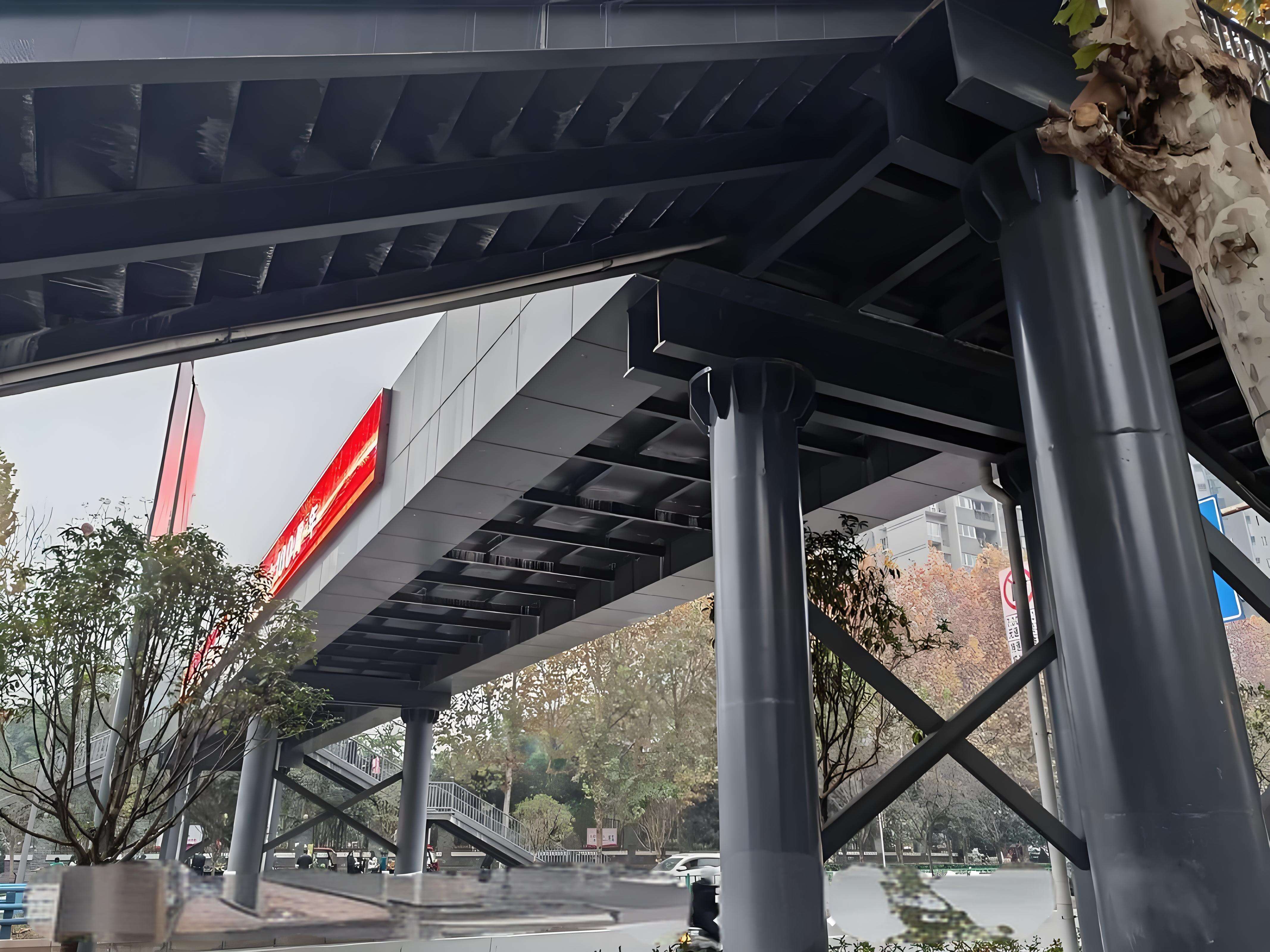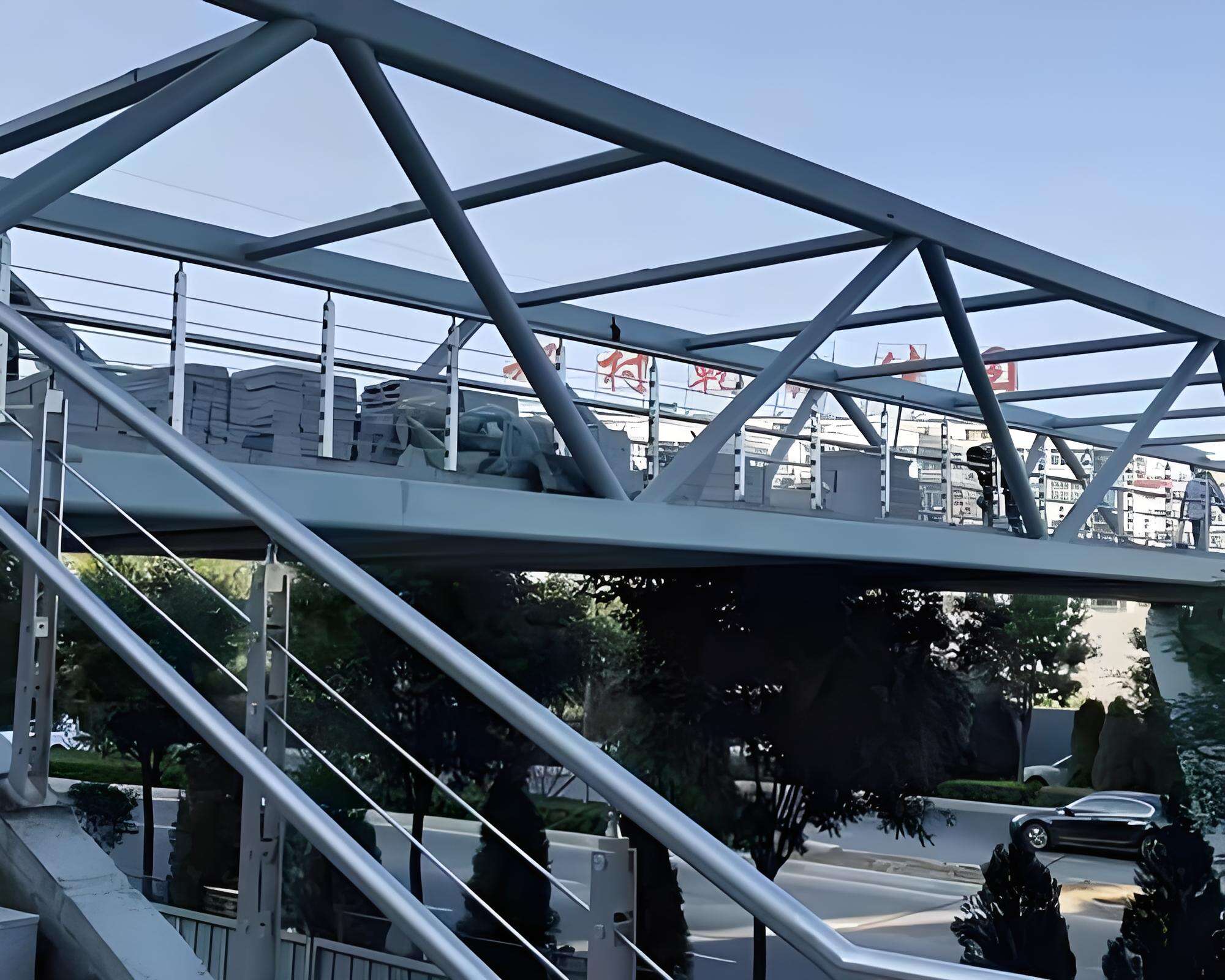The Fundamentals of Steel Bridge Longevity
Inherent Material Properties of Steel
Steel has some really good qualities that make it great for building bridges, especially if we're talking about how long they last. The main thing is that steel can handle a lot of tension, which means it supports heavy weights across big distances. This opens up all sorts of options for bridge designers who want to create structures that span rivers or valleys. Steel bridges stand up pretty well to all kinds of forces acting on them in the real world, so they stay stable and don't fall apart easily. Another cool feature is that steel bends rather than breaks under pressure, which makes it surprisingly tough during unexpected situations. Think about what happens during rush hour traffic jams or when an earthquake shakes things up – steel just takes it in stride most of the time. Plus, steel tends to be consistent from batch to batch, so engineers know exactly what they're working with. This predictability helps maintenance crews plan ahead better, which ultimately means bridges made from steel tend to stick around much longer than other materials might.
Engineering Design Principles for Durability
How steel bridges are engineered plays a major role in how long they last before needing repairs or replacement. At the core of good bridge design lies knowing where weight gets distributed across different parts of the structure and finding ways to optimize this so the whole thing stands up better over time. When designers really get down to brass tacks about how various forces act on different sections of a bridge, they end up creating structures that simply outlast expectations. Structural redundancy matters too. Smart engineers build in backup systems so if one part starts failing, others take over without catastrophic consequences. This makes people feel safer when crossing those steel spans. Looking ahead is just as important as looking at current needs. Most modern bridges need to handle heavier traffic than ever before while dealing with harsher weather conditions. The best designs factor all these variables in from day one, which means fewer costly renovations down the road and bridges that keep serving communities well into the future despite whatever challenges come along.
Why Steel Bridges Outlast Other Materials
Comparative Analysis: Steel vs. Concrete & Timber
Steel bridges really shine because they have a much better strength to weight ratio than concrete options. This lets engineers create structures that span wider distances using less material, which saves money and looks better too. Wood on the other hand tends to warp or crack as seasons change, weakening the whole structure when weather gets extreme. Steel just doesn't do that kind of thing though it stays strong even when temperatures swing around. Another big plus is how steel allows for longer spans between supports, so there are simply fewer piers needed along river crossings. Fewer supports mean less work for maintenance crews checking things over or fixing problems down the road. Bridge owners end up with something that lasts longer without constant attention, which makes steel bridges pretty hard to beat in terms of long term value.
Corrosion Resistance & Structural Integrity
New methods to fight corrosion, like galvanizing steel, really make a difference when it comes to how long bridges last, particularly where there's salt air or harsh chemicals around. What these treatments do is form a barrier between the steel and whatever might eat away at it, so the bridge stays strong year after year. Most bridge owners schedule regular checkups too. These inspections catch small rust spots before they become big headaches down the road. Some companies are now using special steel mixes that just don't corrode as easily as old fashioned steel does. This gives engineers another tool in their toolbox for keeping bridges safe. All told, combining good materials with proper maintenance means our bridges stay up longer and keep people moving safely across them.

Critical Factors Influencing Steel Bridge Lifespan
Environmental Exposure & Climate Conditions
Knowing how steel bridges interact with their environment and what kind of climate they face makes all the difference when it comes to building something that lasts through the decades. For areas hit by severe weather events regularly, picking the right steel grade and applying proper protective layers becomes absolutely necessary if we want our bridges standing strong after years of exposure. Good engineers look at what kind of weather beats down on their project site before making decisions about materials. They focus on creating structures that stand up against whatever nature throws at them, making sure climate factors get proper attention during planning stages. When sustainability gets built into these designs from day one, bridges end up being able to handle unexpected shifts in weather patterns over time, which means they stay functional even as our climate continues changing unpredictably.
Traffic Loads & Fatigue Resistance
Looking at what kind of traffic weight steel bridges will face is really important if they're going to last decades without major problems. When engineers figure out these numbers, it tells them whether the bridge stands up against all that constant back and forth movement from cars passing over day after day. Good designs that take fatigue into account make all the difference in how long a bridge lasts before needing repairs. Most experienced civil engineers know this stuff inside out. They run regular checks on load capacities while also studying local traffic trends. These assessments give them the information needed to reinforce weak spots or adjust things when required, which keeps the whole structure safe and functional for years to come.
Corrosion Prevention Techniques
Steel bridges face serious problems from corrosion over time, though there are ways to fight back against this common issue. Cathodic protection works really well for parts that get wet all the time, like those near rivers or coastal areas. This technique basically stops electrons from moving through the metal, which prevents rust from forming. Maintenance crews regularly apply things like epoxy paints and silicone-based sealants to keep water out of vulnerable spots. Some bridges even have special wax treatments that last several years before needing touch-ups. When bridge maintenance staff understand how corrosion happens and what works best to stop it, they can extend bridge life by decades instead of just a few years. Many local governments now include corrosion management in their standard inspection protocols.
Modern Innovations Extending Bridge Service Life
Advanced Galvanization Methods
Zinc based coatings represent one of the best ways to keep bridges standing longer before they start falling apart from rust. The coating creates a protective layer against corrosion which makes steel structures last much longer than they otherwise would. Hot dip galvanization gives especially good results because it covers every nook and cranny of the metal while sticking to it really well. Beyond just keeping bridges safe for decades instead of years, this kind of treatment actually saves money on repairs down the road. Recent improvements in how we apply these coatings have made them cheaper to produce and faster to install, so many engineers now see galvanization as their go to solution whenever building or repairing bridges becomes necessary.
High-Performance Protective Coatings
Protective coatings play a major role in fighting off damage from weather and other environmental factors on steel bridges. Many modern coatings either repair themselves when damaged or continue providing extra layers of defense as they age, which keeps them working properly for years longer than traditional options. Regular inspections and material upgrades help maintain these coatings' effectiveness across the entire lifespan of a bridge structure. The result? Longer lasting bridges that save money in the long run while standing up better against corrosion and weathering. For transportation departments and civil engineers, investing in quality coatings makes both economic and structural sense for maintaining critical infrastructure.
Integration of UHPC Components
When combining Ultra-High Performance Concrete (UHPC) with steel structures, engineers see real gains in how stiff and durable these constructions become. What makes UHPC special is how it works together with steel to boost overall strength while opening up new ways to design buildings and infrastructure. The material isn't just functional either it looks good too, which explains why architects love working with it when creating bridges that stand out visually. Studies over recent years have looked at how well UHPC holds up in steel bridges specifically, and early data points to longer service life than traditional materials. Incorporating UHPC means building bridges that last longer under stress and look better doing it, something that satisfies both the practical needs of civil engineering and the creative demands of architectural design in today's construction landscape.
Real-World Examples: Steel Bridges Standing the Test of Time
Stearns Bayou Bridge: 50+ Years Maintenance-Free
Take the Stearns Bayou Bridge for instance - this old steel span has basically survived intact for over 50 years with hardly any upkeep required. The thing still stands strong after all these decades, which speaks volumes about how well it was built back in the day. Regular checkups show that the structure remains solid and durable even though nobody's been messing around with it much over the years. Bridge engineers point to two main reasons for this longevity: top notch materials originally selected and smart maintenance decisions made right from the start. These kinds of real world results prove why steel continues to be such a popular choice for bridges that need to last generations, particularly when designers get the basics right and maintain them properly throughout their lifespan.
Stoney Nakoda Exshaw Wildlife Arch: Balancing Durability & Ecology
The Stoney Nakoda Exshaw Wildlife Arch stands out as a bridge design that manages to combine solid construction with environmental thinking. What makes this structure remarkable isn't only how well it holds up structurally, but also how it incorporates features that protect local wildlife habitats, which helps maintain the area's ecological balance. The builders used environmentally friendly materials and tried new methods during construction to make sure the bridge lasts longer without harming the nearby ecosystem. When evaluating the project's success, engineers look at both how strong the structure remains over time and what positive effects it has on nature around it. These kinds of comprehensive approaches are becoming increasingly important in today's bridge building world. Looking ahead, projects like this one show how we can create infrastructure that serves people while still respecting our planet's needs.
Maintenance Strategies for Maximum Longevity
Routine Inspection Protocols
Regular inspections help catch problems with steel bridges before they become serious, which ultimately extends how long these structures last. A well planned inspection routine makes it possible to spot small issues before they turn into big headaches down the road. Bridge inspectors need proper training to spot warning signs like rust spots or hairline fractures that might signal bigger trouble ahead. Keeping detailed records after every checkup creates a complete picture of how the bridge is holding up over time. These records prove extremely useful when planning maintenance work later on and keeping the whole structure safe for everyone who uses it. Good inspection practices really matter because they form the foundation of any solid maintenance plan, helping ensure steel bridges stay strong and functional for years to come.
Repainting Schedules & Surface Treatments
A good repainting schedule goes a long way toward preventing corrosion on steel bridges. When planning these schedules, engineers need to look at local weather patterns, salt exposure levels, and traffic volumes since these factors vary greatly from one bridge site to another. Modern coatings now include epoxy resins and polyurethane finishes that form extra barriers against moisture penetration. Bridge maintenance teams are constantly adopting new spray technologies and blast cleaning methods as they become available through industry research. These ongoing improvements help steel bridges withstand harsh environments for decades longer than traditional maintenance would allow, which saves money on replacements and keeps transportation networks functioning safely year after year.
Addressing Structural Wear Proactively
Taking care of structural wear before it gets bad really helps steel bridges last longer. When engineers spot weak spots during routine checks, they reinforce those areas regularly instead of waiting for problems to get worse. This method stops small cracks from turning into big headaches down the road. Putting in place good monitoring systems gives constant updates about how healthy the bridge actually is, so fixes can happen right away if something looks off. Some companies also use fancy computer models to predict where trouble might start next, which cuts down on expensive repairs later on and keeps bridges running smoothly for many more years. All these forward thinking approaches make all the difference in keeping our steel bridges safe and functional over time.
Sustainability & Future Trends in Steel Bridge Construction
Recyclability & Lifecycle Assessment
The ability to recycle steel plays a big role in making bridges more sustainable over time. Steel can be recycled at nearly 100%, which means there's much less waste generated throughout a bridge's entire life cycle from construction all the way to eventual demolition. Studies looking at full life cycles indicate that properly maintained steel bridges generally leave a smaller environmental footprint than alternatives like concrete or timber structures. The recycling industry keeps finding better ways to process scrap steel, so each time it gets reused, the material stays just as strong and reliable as before. Because of these ongoing improvements, many engineers and architects now see steel not just as durable but also as one of the most environmentally friendly options available for building long lasting infrastructure projects.
Smart Monitoring Systems for Predictive Maintenance
Smart monitoring systems are changing how we maintain steel bridges across the country. These systems rely on IoT devices and various smart tech solutions that give engineers much better insight into bridge conditions. They collect live data and send warnings when something looks off, which is huge for catching small problems before they turn into big headaches. The financial benefits are clear too many cities save money on emergency repairs while keeping their communities safe from unexpected failures. Bridge owners report fewer incidents since implementing these monitoring setups. For anyone involved in infrastructure management, adopting smart monitoring isn't just about staying current it's becoming essential for responsible bridge stewardship in the modern era.
Eco-Friendly Steel Production Advancements
Steel makers around the world are making real progress in cutting down their carbon output while still producing high quality metal. New methods being tested include electric arc furnaces and hydrogen-based reduction processes that cut greenhouse gases during manufacturing. Some companies are even experimenting with scrap-based production systems that require far less energy than traditional blast furnaces. Meanwhile researchers continue looking at substitutes for coke and iron ore, though they need to ensure these alternatives maintain steel's legendary strength properties. Many manufacturers have started working closely with green-minded suppliers, which helps improve the environmental credentials of everything from skyscrapers to highway overpasses. The whole sector seems determined to clean up its act as pressure mounts from regulators and consumers alike demanding greener building materials for infrastructure projects.
FAQs
What are the key properties that make steel bridges durable?
Steel bridges are durable due to their high tensile strength, ductility, and consistent material quality, which provide stability and resilience against dynamic forces in various environments.
How does corrosion affect steel bridges?
Corrosion can lead to structural degradation over time. Modern techniques such as galvanization and protective coatings are used to prevent and manage corrosion, ensuring long-term integrity and safety of steel bridges.
Why do steel bridges have longer spans compared to other materials?
The higher strength-to-weight ratio of steel allows for efficient structural designs and longer spans with less material, reducing the need for additional supports and simplifying maintenance.
Table of Contents
- The Fundamentals of Steel Bridge Longevity
- Why Steel Bridges Outlast Other Materials
- Critical Factors Influencing Steel Bridge Lifespan
- Modern Innovations Extending Bridge Service Life
- Real-World Examples: Steel Bridges Standing the Test of Time
- Maintenance Strategies for Maximum Longevity
- Sustainability & Future Trends in Steel Bridge Construction
- FAQs






